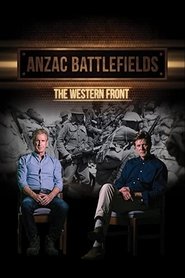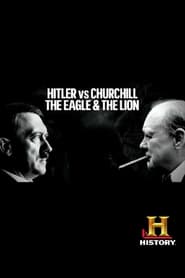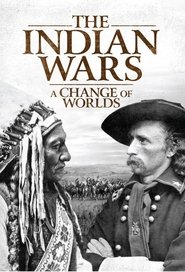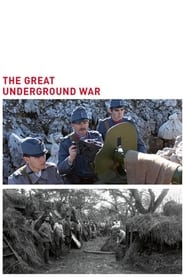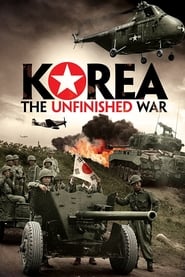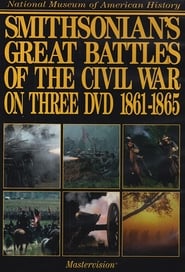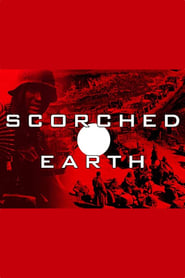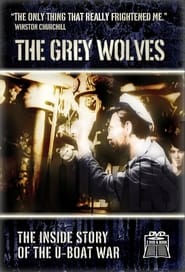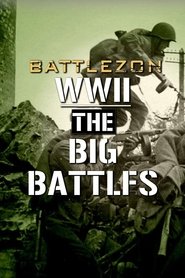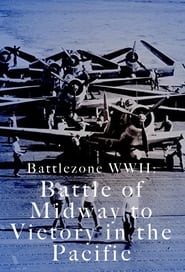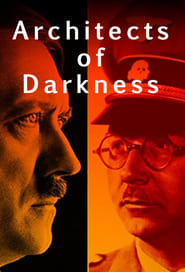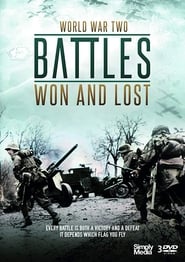Top Rated War Politics TV Series on Tubi TV - Page 6
-
Jungle War
2019
Jungle War
2019
Jungle Warfare in the 20th century, from WW2, to Malaya and Indonesia, to Vietnam and Cuba. -
Anzac Battlefields
2015
Anzac Battlefields
2015
Through graphics, archive, oral history and travels across the scenes of past battles, Neil Pigot and Dr Peter Pedersen explain where, why and how the ANZACs fought in France and Belgium almost 100 years ago. -
Rescue Warriors
2005
Rescue Warriors
2005
Go inside the intense training to become a USAF Pararescue Jumper. Meet the trainees and be there as they endure one of the longest and toughest special operations training courses in the world! Find out who will make it through so "That Others May Live." -
Hitler vs Churchill: The Eagle and the Lion
2016
A documentary which explores the remarkable parallels between the careers of Adolf Hitler and Winston Churchill, as well as their personal rivalry and animosity. -
The First War for Western Civilization
2016
The Greco-Persian War was pivotal in the creation of the modern world - yet all that is generally remembered are the 300 Spartans at Thermopylae. This documentary examines the whole history, from the Ionian Revolt (497BC) to the Peace of Callias (449BC), and also covers the legacies of the war - including Democracy. -
Unsung Heroes Of World War II
2020
Beneath the big marquee names of WWII was the magnificent layer of heroes who performed with enormous valour but made few headlines - this is their story. -
The Indian Wars - A Change of Worlds
2016
The year 1540 was a crucial turning point in American history. The Great Indian Wars were incited by Francisco Vazquez de Coronado when his expedition to the Great Plains launched the inevitable 350-year struggle between the white man and the American Indians. From that point forward, the series of battles between the military and civilian forces of the United States and the native American Indians began when blood was shed and ultimately tens of thousands of lives were lost on both sides. The Battle of Tippicanoe, the Battle of Horseshoe Band, all three Seminole Wars and the Battle of Little Big Horn were some of the most important conflicts that led up to the last massacre, the Battle of Wounded Knee, where America's landscape would be forever changed! -
The Great Underground War
2014
A five-part series that explores the forgotten story of the incredible engineering feats and secret survival techniques of five legendary battles fought underground during World War I. -
Korea: The Unfinished War
2003
It was the first war the UN would fight in, the opening salvos of the Cold War. A war that would redefine global politics & shape a Region. This is the Story of the Korean War. Through gripping reenactments & the words of those who fought & lived through it, this four part series will take you through the horrors of the war. -
Smithsonian's Great Battles of the Civil War
1994
This critically acclaimed television and video series from the National Museum of American History is a sweeping and compelling look at the war's military, political and social history. Each episode features dramatic reenactments of important campaigns; first-hand accounts of eyewitnesses and participants read by distinguished actors; period photographs, paintings and artifacts; intriguing expert challenges to traditional historical thinking; original contemporary illustrations; computer enhanced maps; and music of the time. -
U-Boats Hitler's Sharks
2009
From the beginning of the Second World War the sea became a vitally important scene of conflict. Great Britain relied on receiving supplies by sea and, therefore, a total blockade of the United Kingdom was one the main objectives of Hitler's Germany. The British government was forced to maintain a strategy of antisubmarine warfare throughout the conflict, while the Royal Navy sought to interrupt the Third Reich's maritime traffic. In these circumstances the submarine became an important weapon of war. Headed by Karl D nitz, who would later succeed Hitler as Head of State, the German U-boats gained the initiative in the sea war and from the beginning launched all-out attacks against shipping en route to Great Britain. One of the great unanswered questions of the war is what would have happened if Hitler had granted the numerous requests made by D nitz for more submarines? -
WWII War Diaries
2017
WWII War Diaries
2017
Taken directly from the diaries of soldiers fighting in WWII, this series chronicals the experiences, losses, and victories felt on the battlefieds of the second world war. -
The Concise History of WWII
2007
This superb program provides a clear and factual account of the causes, course and consequences of World War II, while also assessing the contribution of particular key leaders, such as Hitler, Churchill, Roosevelt, Mussolini and Stalin. -
Scorched Earth WWII
2016
Scorched Earth WWII
2016
When the Nazis unleashed the 'Blitzkrieg', it was a kind of warfare the world had never witnessed before and immediately upended all traditional ideas of military strategy and tactics. Suddenly Europe and North Africa was reeling from this new type of combat and had to adapt quickly or suffer the consequences of Hitler's evil aims. Now, using ground-breaking graphics and state-of-the-art computer animation, as well as archival footage culled from Allied and Axis sources, the incredible initial successes of Hitler's seemingly unstoppable war machine are revealed and examined. Includes 'Hitler's Big Guns', 'Africa Korps', 'Infantry Firepower' and more! -
The Grey Wolves: Echoes from WWII
2016
Grey Wolves captures life on board a U-boat, from the German perspective. First hand accounts in text, letters, diaries, journals, memoirs, relaying tales of the mundane and the routine, dramatic and heroic; the fear and resilience of every crew member, from Kapitainleutnant to Mechaniker. It is a vivid, brutally realistic portrait of the men who fought and died beneath the surface of the Atlantic in what was, perhaps, the most critical battle of the war. -
Als der Krieg nach Deutschland kam
2006
When American troops started their final invasion of Nazi Germany in February 1945, cameramen were at their side and complied over a thousand reels covering 12 weeks in Germany until the ultimate collapse of the Third Reich including stories on the road from the Bulge over the Remagen Bridge to the Eagle’s Nest. Michael Kloft has selected the most striking scenes for his two-part documentary. -
Battlezone WWII: The Big Battles
2015
This Battlezone series features an in-depth analysis of the major battles that decided the outcome of WWII. -
Battlezone WWII: Battle of Midway to Victory in the Pacific
2015
This Battlezone series looks at the US battle with Japan for supremacy in the Pacific and the eventual surrender. -
Architects of Darkness
2017
Six one hour episodes each focusing on a key individual that traces the trajectory and design of Hitler’s thousand year Reich. From the beer halls of Munich to the horrors of the Final Solution, these individuals were truly Architects Of Darkness of the Nazi Third Reich. -
World War II: Battles Won and Lost
2017
This sweeping World War II series examines the outcome of battles fought in every major theater. It shows that these battles were decided by strategy and by which armies could capitalize on the terrain or gain better access to supplies. Whether waged by the Allies or by Hitler and the Axis powers, victory or defeat could determine possession of territory, resources, or the will to go on fighting.
 Netflix
Netflix
 Amazon Prime Video
Amazon Prime Video
 Apple iTunes
Apple iTunes
 Apple TV Plus
Apple TV Plus
 Disney Plus
Disney Plus
 Google Play Movies
Google Play Movies
 Paramount Plus
Paramount Plus
 Hulu
Hulu
 HBO Max
HBO Max
 YouTube
YouTube
 fuboTV
fuboTV
 Peacock
Peacock
 Peacock Premium
Peacock Premium
 Amazon Video
Amazon Video
 The Roku Channel
The Roku Channel
 AMC+
AMC+
 Kocowa
Kocowa
 Hoopla
Hoopla
 The CW
The CW
 Vudu
Vudu
 Starz
Starz
 Showtime
Showtime
 PBS
PBS
 Pantaflix
Pantaflix
 FXNow
FXNow
 Tubi TV
Tubi TV
 Kanopy
Kanopy
 Comedy Central
Comedy Central
 Crunchyroll
Crunchyroll
 Microsoft Store
Microsoft Store
 Redbox
Redbox
 Sun Nxt
Sun Nxt
 ABC
ABC
 DIRECTV
DIRECTV
 Crackle
Crackle
 Fandor
Fandor
 Plex
Plex

